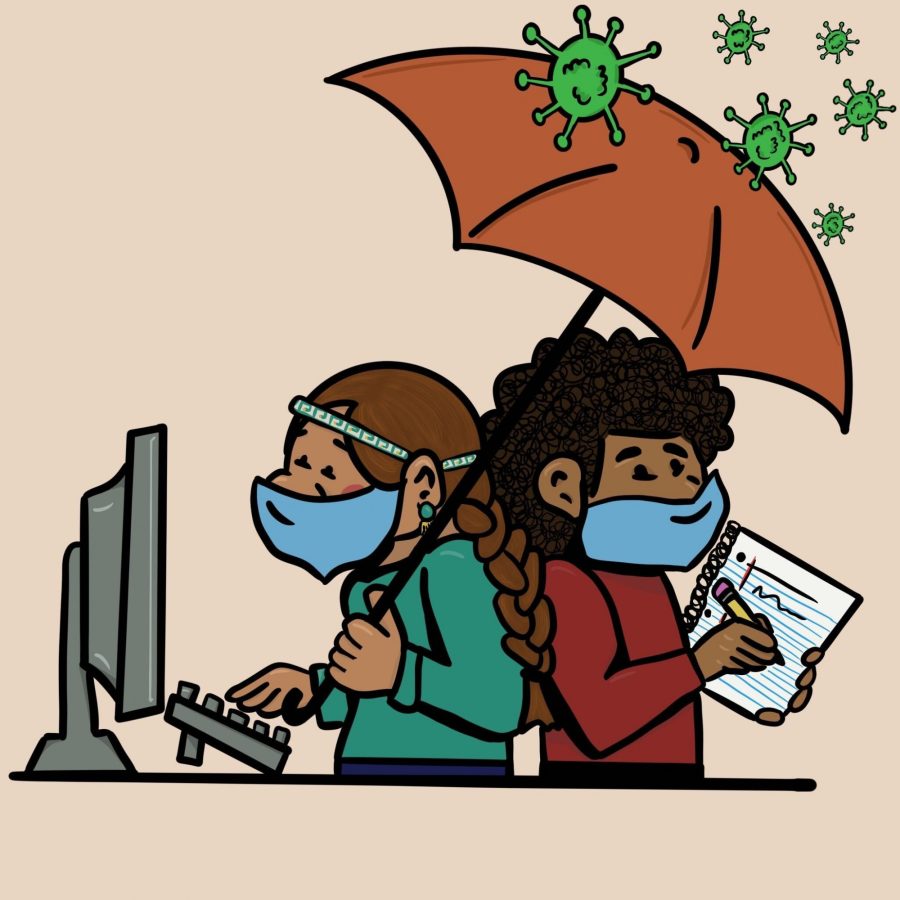The COVID-19 pandemic was an arduous period in time for the majority of the Tucson and Southern Arizona community. The pandemic caused an economic, social and manufacturing collapse which ultimately damaged the spirit of the community.
Nearly three years later, the mourning phase has diminished and people have begun to heal. Some people are choosing to use art as a way to heal because it can inspire reflection and allow a community to form connections through shared experiences.
The University of Arizona Confluencenter for Creative Inquiry has given the local community the opportunity to do so with the PandemiDiarios. The Confluencenter is an organization that, according to its webpage, “is committed to sponsoring interdisciplinary projects that address complex issues in the arts, humanities and social sciences.”
Angela Martinez, the communications and events coordinator for the Confluencenter for Creative Inquiry, shared that the Confluencenter has awarded a total of $16,000 in microgrants to 35 Tucson and Southern Arizona residents for a program called PandemiDiarios and PandemiDiarios on the Border. The term PandemiDiarios comes from the blending of “pandemic” and “diarios” (diaries).
The first installment of PandemiDiarios was focused on response to human moments, experiences and reflections during the COVID-19 pandemic. Sixteen artists were awarded in June 2020 for the first installment of this project.
In the spring of 2021, the second installment of PandemiDiarios was released and focused on emphasizing the pandemic experience on the U.S.-Mexico Border with the support of the Andrew W. Mellon Foundation. Twenty-one artists were awarded microgrants for their creative works.
Alejandro Macias submitted his work to PandemiDiarios on the Border and was awarded for his collection of two-dimensional paintings, “Everything and Nothing at Once.” Macias, an assistant professor for the UA’s School of Art, expressed that his inspiration was his experience being raised and becoming a product of the U.S.-Mexico border. Born and raised in Brownsville, Texas, there was a clash of the two cultures. Most of the time, Macias felt ostracized and alienated due to his complex multicultural background.
“I can definitely feel out of place in both worlds. I’m in this in-between space and that is what the work is about: a response to feeling like you can’t connect with either sometimes,” Macias said.
Macias moved to Tucson in 2019, so he didn’t even have a year to adjust before the pandemic arrived. He was challenged to teach visual art skills, concepts and practices to students in an atypical and unfamiliar way.
“I didn’t get to discover as much as I would have liked about the new city I lived in. It was an isolating and mentally challenging time,” Macias said. “How do you teach art via Zoom? How do you apply figure drawing online?”
Macias continues to paint in regard to his identity and background. He has an upcoming show at Arizona State University Art Museum on Oct. 29, “Lucha Libre: Beyond the Arenas.”
Another applicant, Ruxandra Guidi, a freelance journalist and an assistant professor of practice at the UA’s School of Journalism, was awarded for her quilt pieces, “Stitching Ambos Nogales.” The quilts depict a new vision of Ambos Nogales without a border wall. Guidi was inspired by the alluring topography of the landscape that Ambos Nogales has.
“There’s Nogales, Arizona and Nogales, Mexico. We think of them as two separate cities, but they share everything. They share the same air, the same watershed, the same landscape and many of the same families. There is a connection despite the border wall and when you see the big open sky it feels like one continuous landscape,” Guidi said.
The pandemic made Guidi want to seek out more places or opportunities where she could hide out with her thoughts and feelings.
“I just wanted to enjoy solitude in new ways to think about stuff. I think that’s when I most got into stitching and when I least wanted to report. I think it’s made me more conscious about everything. I think more deeply about things. The pandemic, whether we see it or not, has changed all of us,” Guidi said.
Confluencenter just released a third installment of the program, PandemiDiarios: Stories of Resiliency, and announced a call for proposals.
“The goals in this third iteration are to have a broad picture of how creative people continue to survive and thrive during the pandemic and how the idea of ‘resilience’ shows in their creative work,” Dr. Javier Duran, director of Confluencenter for Creative Inquiries, said.
All forms of art and creative expression are accepted: poems, songs, dances, photography, fashion designs, videos, paintings or sculptures. Applications close Oct. 28 at 5:00 p.m. MST. Students, academic professionals and community members are all eligible to apply. Selected applicants will receive a generous award of $500.
Follow the Daily Wildcat on Twitter















